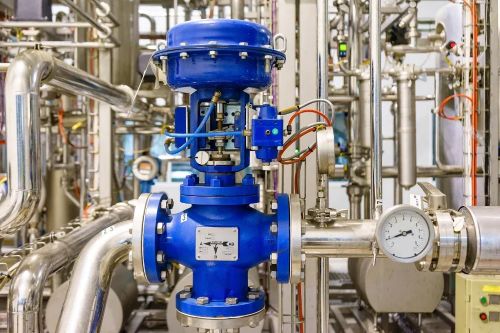


Common Faults and Solutions of Control Valves, Control valves are an indispensable part of industrial processes
We are a leading control valves manufacturer in China, providing high-quality valves and control actuators designed to meet the diverse needs of various industries.
Common Faults in Control Valves and Solutions
Control valves are essential in maintaining the stability and efficiency of industrial systems by regulating flow, pressure, and temperature. However, despite their importance, control valves can face various issues that impact performance. Below are some common faults encountered in control valves, along with effective solutions to mitigate these problems.
Problem:
Control valves can become clogged with particles or solids, particularly when handling media that contains debris or particulates. This can lead to blockages in the throttle port and other critical components, affecting the valve’s performance.
Solution:
To resolve this, an external flushing system can be installed. This system uses gas or steam to flush out blockages at the lower part of the valve. This method allows for the cleaning of the valve without dismantling it, ensuring that the valve can resume operation quickly and efficiently without causing significant downtime.
Problem:
Small-diameter or ultra-small flow control valves are especially vulnerable to blockages caused by impurities in the media. Impurities like dust, dirt, or rust can clog the valve’s internal components, preventing proper operation.
Solution:
A pipeline filter should be added before the valve to prevent impurities from reaching the valve and causing blockages. Additionally, for valves with positioners, installing air filtration and pressure-reducing valves on the air supply line helps prevent clogging of the air throttle ports. This will help maintain the smooth operation of the valve by preventing contamination from affecting the air control system.
Problem:
During commissioning or after valve maintenance, debris such as welding slag, rust, or contaminants can accumulate inside the valve, potentially clogging critical components or damaging sealing surfaces.
Solution:
To address this issue:
Problem:
Straight-through control valves have more complex flow paths, which can lead to the deposition of media or blockages over time, particularly in processes involving viscous or particulate-laden fluids.
Solution:
Switching to an angle valve can improve the flow characteristics. Angle valves are designed to handle such issues more effectively due to their superior fluid dynamics and better scouring performance. These valves have smaller dead zones and allow for smoother flow, reducing the likelihood of clogging and improving overall efficiency in media handling.
Control valves play a crucial role in maintaining efficient and reliable industrial operations. Common issues such as clogging, leakage, and valve size mismatches can disrupt performance. However, implementing preventive measures like external flushing systems, pipeline filters, regular cleaning, and correct sizing can improve the valve’s reliability and longevity. By understanding and addressing these common faults, industries can ensure smooth operation, reduce downtime, and extend the lifespan of their control valves, thereby optimizing overall system performance.
